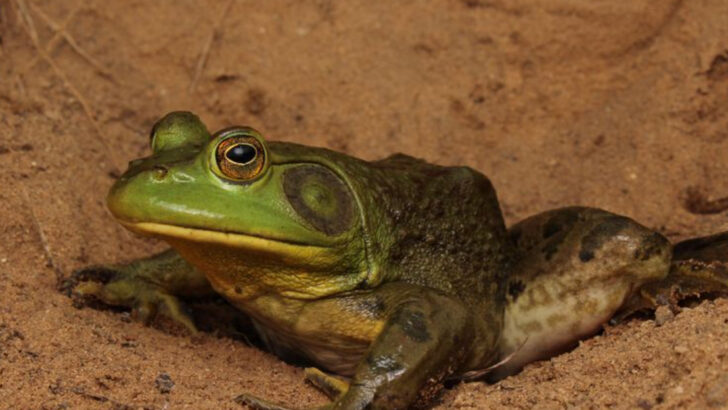Illinois isn’t just farmland and cityscapes—it’s wilder than you think.
Beyond the highways and cornfields, creatures both fierce and fascinating roam the state’s forests, rivers, and prairies. From secretive bobcats to ancient alligator snapping turtles, Illinois is home to animals that would surprise even longtime residents.
Some are survivors from a wilder past, clinging to the last patches of untouched land. Others are unexpected guests, showing up in places they were never seen before. Either way, they prove that Illinois’s wilderness isn’t as tame as it seems.
Get ready to meet 21 animals that give this Midwestern state a wild side—some adorable, some terrifying, and all worth knowing.
White-tailed Deer
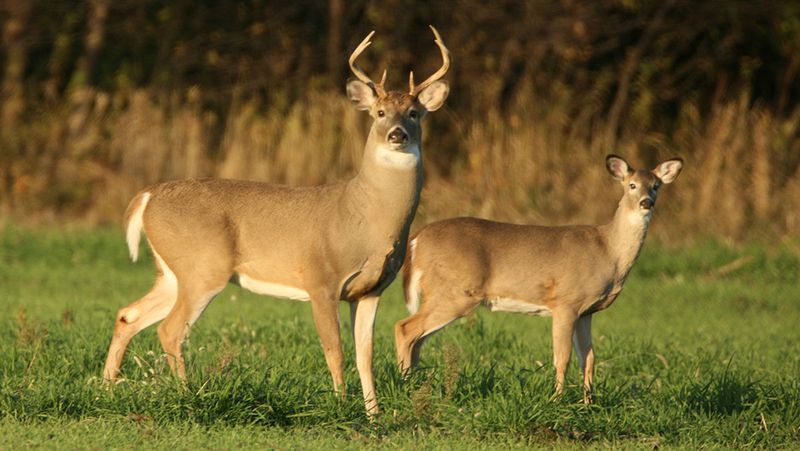
The white-tailed deer is arguably one of the most iconic animals of Illinois. Known for its graceful leap and characteristic white tail, it thrives in the state’s varied landscapes. Encountering these creatures in the wild can be an exhilarating experience.
White-tailed deer are highly adaptable and can be found in forests, fields, and even urban areas. They play a crucial role in their ecosystem by influencing vegetation patterns and serving as prey for predators. Observing their behavior offers insights into the delicate balance of nature.
Their presence marks the changing seasons, with deer seen more frequently during the rutting season in fall.
American Bald Eagle
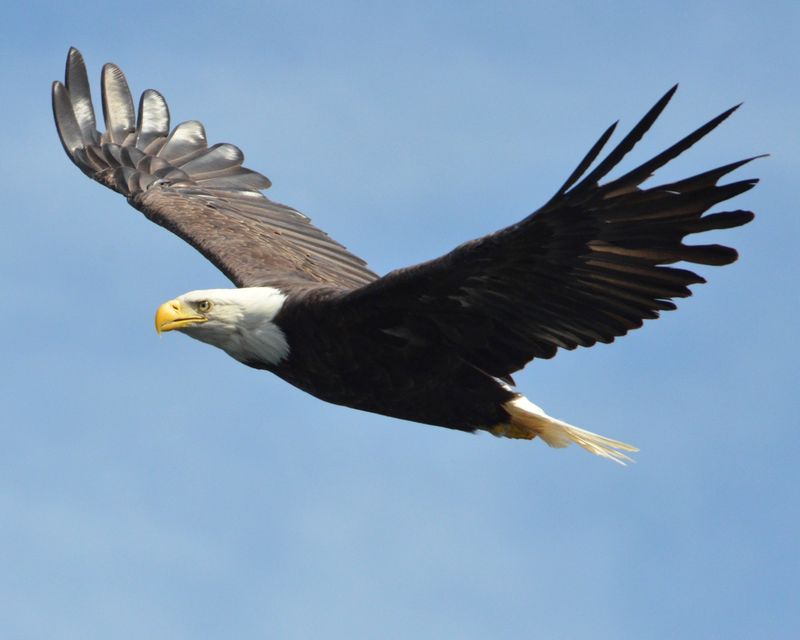
The American Bald Eagle, a symbol of strength and freedom, soars through the skies of Illinois. This magnificent bird of prey is often seen near large bodies of water, such as rivers and lakes, where it hunts for fish.
Spotting a bald eagle in the wild is a thrilling experience. These birds have keen eyesight and impressive wingspans, which make them exceptional hunters. They are a conservation success story, with populations rebounding due to protective legislation.
Their nests, or aeries, are often enormous, showcasing the bird’s remarkable engineering skills. Witnessing an eagle in flight is truly awe-inspiring.
Eastern Cottontail Rabbit
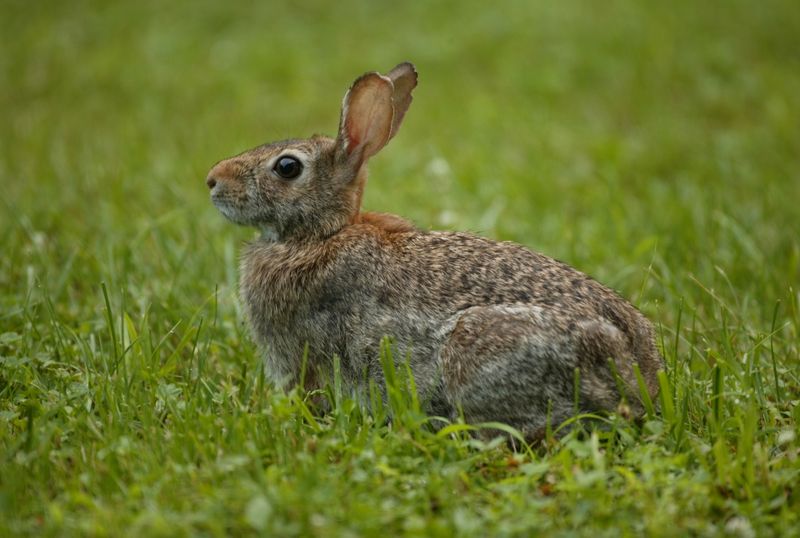
The Eastern Cottontail Rabbit is a familiar sight in Illinois, often seen darting across fields or nibbling on grass in meadows. Its soft brown fur and fluffy tail endear it to many wildlife enthusiasts.
These rabbits are prolific breeders, which helps maintain their population despite the numerous predators they face. They are an essential part of the food chain, providing sustenance for animals like foxes and hawks.
Observing these rabbits offers a glimpse into the resilience and adaptability of wildlife. Their ability to thrive in various habitats, from suburban gardens to rural areas, is truly remarkable.
Red Fox
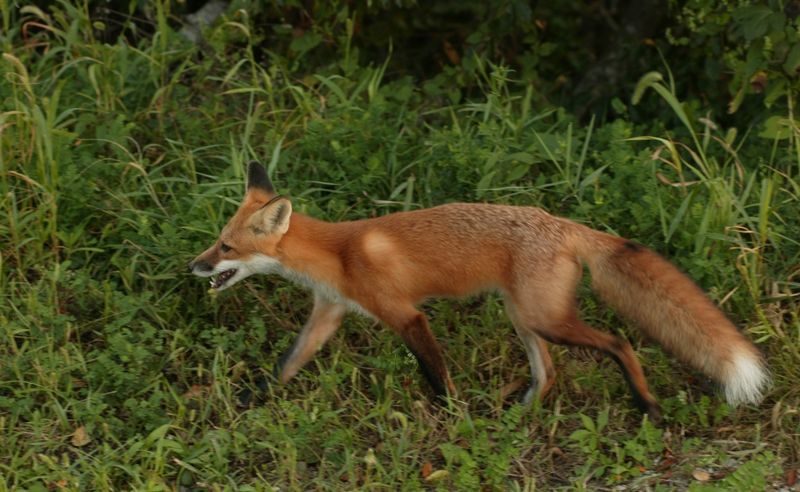
The red fox is a cunning and adaptable predator found across Illinois. Known for its striking orange-red fur and bushy tail, it is often seen in both rural and urban settings.
Red foxes are solitary hunters, preying on small mammals, birds, and insects. Their keen sense of smell and hearing make them skilled at detecting prey even in challenging conditions.
Watching a red fox in action is a captivating experience, showcasing nature’s blend of beauty and cunning. These animals are also known for their playful behavior, often seen pouncing and leaping during hunting or play.
Sandhill Crane
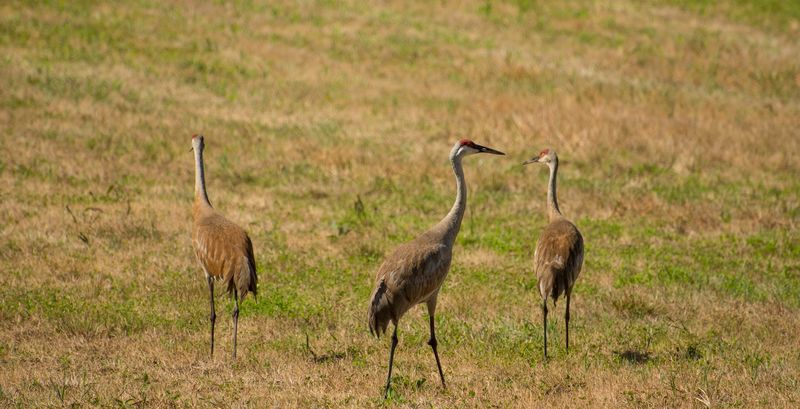
Sandhill cranes are elegant birds that bring a touch of grace to Illinois’s wetlands. Known for their long legs and impressive wingspan, these cranes are often seen in pairs or flocks.
One of their most striking behaviors is their courtship dance, where they perform synchronized movements to attract mates. Their loud, trumpeting calls are unmistakable and can be heard from great distances.
These cranes migrate through Illinois, making seasonal appearances that signal the changing of seasons. Observing them offers a unique perspective on avian life and the intricate rituals of the animal kingdom.
American Beaver
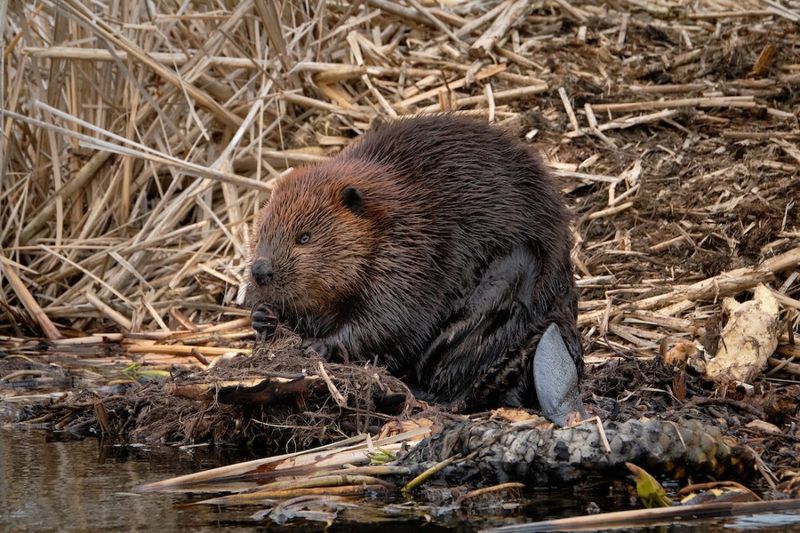
The American Beaver, nature’s industrious builder, plays a vital role in Illinois’s ecosystems. Known for their dam-building abilities, beavers alter landscapes by creating ponds and wetlands.
These structures provide habitat for a variety of species, showcasing the beaver’s importance in maintaining biodiversity. Beavers are easily recognized by their sleek fur, large teeth, and distinctive flat tails.
Spotting a beaver in action is a testament to nature’s engineering marvels. Their work benefits the environment by improving water quality and providing habitats. Beavers are true ecosystem engineers, shaping the landscapes they inhabit.
Eastern Box Turtle
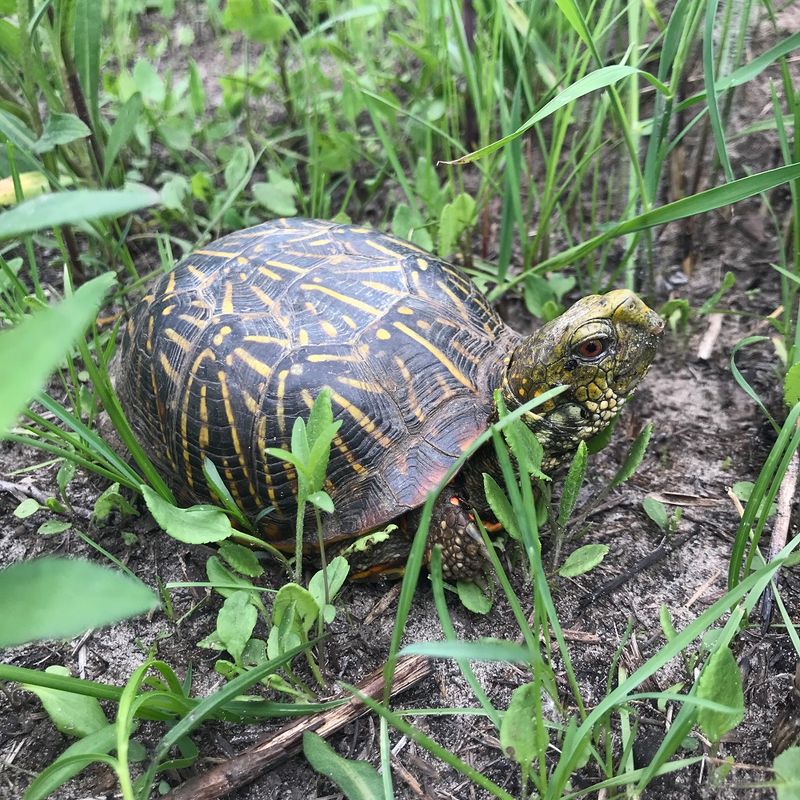
The Eastern Box Turtle is a charming reptile found in the forests and fields of Illinois. Renowned for its distinctive dome-shaped shell, adorned with intricate patterns, it leads a solitary and slow-paced life.
Box turtles are long-lived and can survive for decades in the wild. Their diet includes a mix of plants, insects, and small animals, reflecting their adaptability.
Protecting these turtles is crucial, as they face threats from habitat loss and road mortality. Witnessing a box turtle in its natural habitat is a delight, offering a glimpse into the ancient and enduring world of reptiles.
Great Blue Heron

The Great Blue Heron is a striking presence in Illinois’s waterways. Known for its tall stature and long, graceful neck, this bird is an expert fisher, often seen poised patiently in shallow waters.
Herons use their sharp beaks to catch fish with precision, showcasing remarkable hunting skills. Their elegant flight, with slow, deliberate wing beats, is a sight to behold.
These birds are adaptable and can be found in both rural and urban water bodies. Their presence symbolizes healthy ecosystems, as they thrive in areas with abundant aquatic life. Observing them offers a serene connection to nature.
American Mink
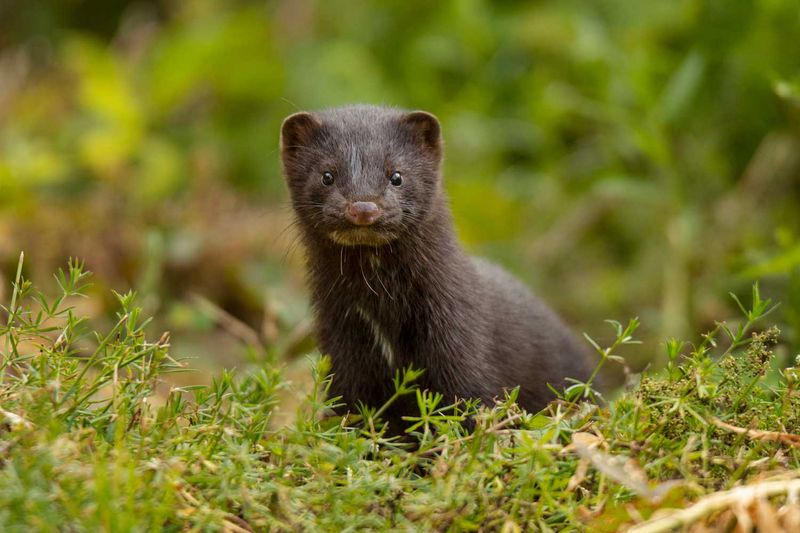
The American Mink is a sleek, semi-aquatic mammal that adds a touch of mystery to Illinois’s waterways. Known for its dark, glossy fur and swift movements, it is a skilled swimmer and hunter.
Minks are carnivorous, preying on fish, crustaceans, and small mammals. Their presence indicates a healthy aquatic ecosystem, as they require clean water to thrive.
Observing a mink in the wild is a rare treat, providing insight into their elusive nature. These animals are instrumental in controlling pest populations, contributing to the ecological balance. Their playful antics in water are a joy to watch.
Barred Owl
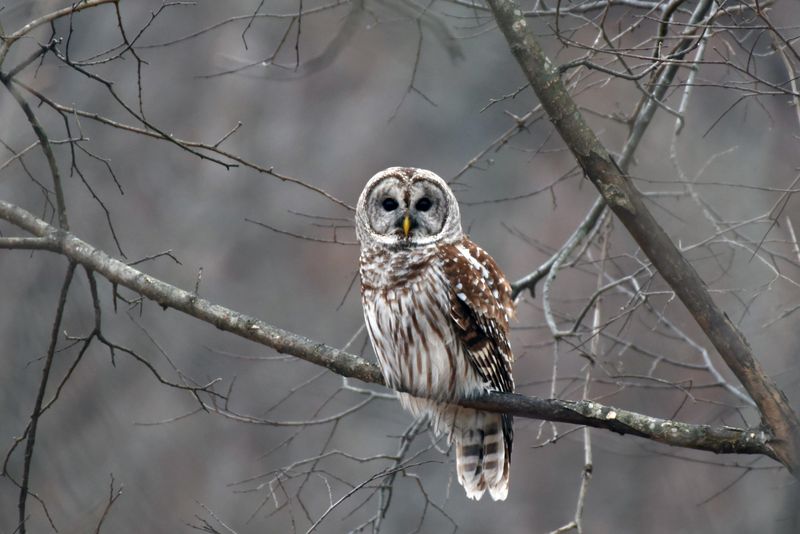
The Barred Owl, with its haunting calls, adds a mysterious charm to Illinois’s forests. Known for its distinctive barred pattern on feathers and round face, it is a master of camouflage.
Owls are primarily nocturnal, hunting small mammals and birds under the cover of darkness. Their silent flight is facilitated by specialized feathers, allowing them to surprise prey.
Listening to a barred owl’s call, often described as “who-cooks-for-you,” is an enchanting experience. These owls play a vital role in controlling rodent populations, maintaining the ecological balance in their habitats.
River Otter
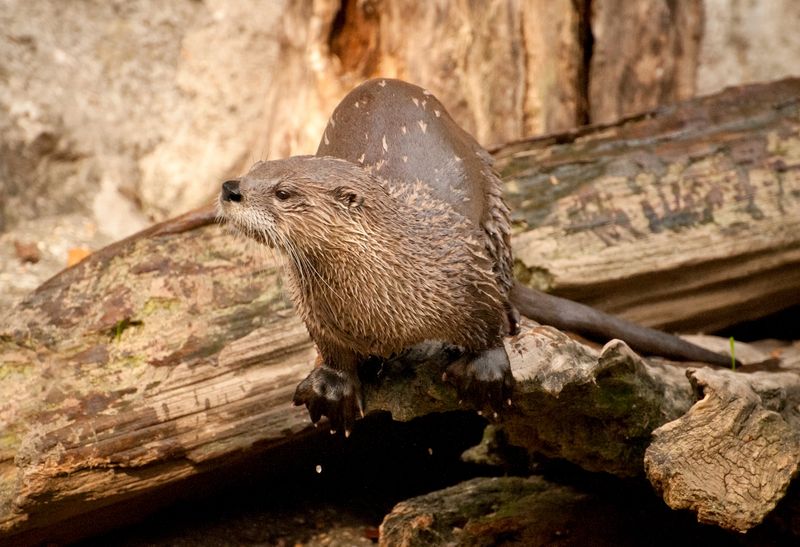
River otters are the playful acrobats of Illinois’s waterways. Known for their sleek bodies and sociable nature, they bring joy to the rivers they inhabit.
Otters are excellent swimmers, using their webbed feet and powerful tails to navigate water with ease. They feed on fish, amphibians, and crustaceans, serving as indicators of healthy ecosystems.
Watching river otters play is a delightful experience, as they engage in sliding and tumbling activities. Their presence reflects the health of aquatic environments, as they require clean water and abundant food. Otters embody the playful spirit of nature.
Pileated Woodpecker
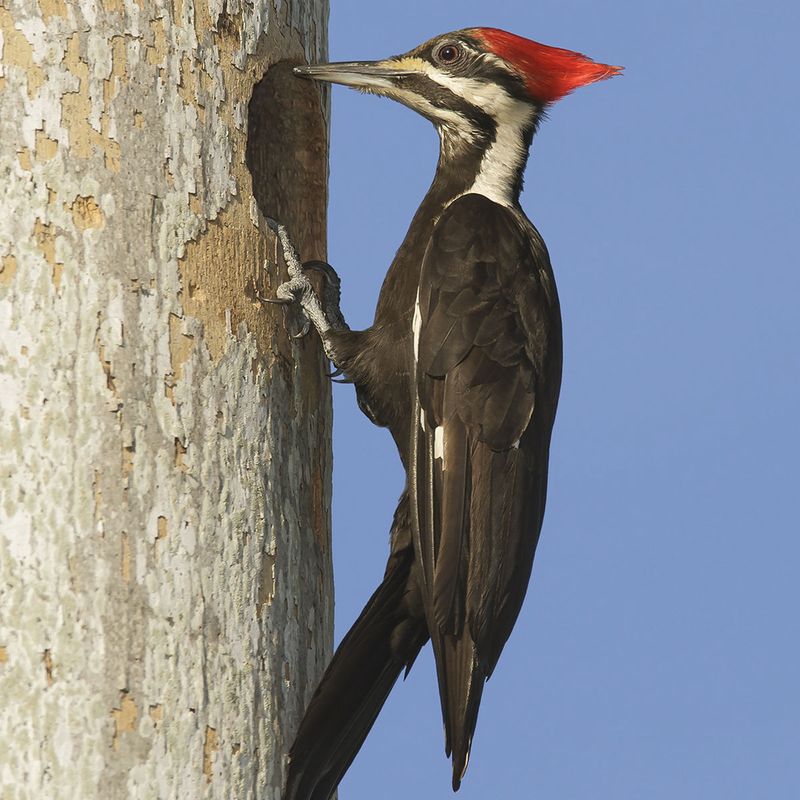
The Pileated Woodpecker is a striking bird known for its vibrant red crest and powerful pecking abilities. Often heard before seen, its loud drumming echoes through Illinois forests.
These woodpeckers are adept at chiseling into trees to find insects, their primary food source. They create large, rectangular holes in trees, which are later used by other animals for nesting.
Spotting a pileated woodpecker is an exciting event, offering a glimpse into the forest’s dynamic life. Their presence is a testament to the richness of Illinois’s woodlands, supporting diverse wildlife communities.
Eastern Gray Squirrel
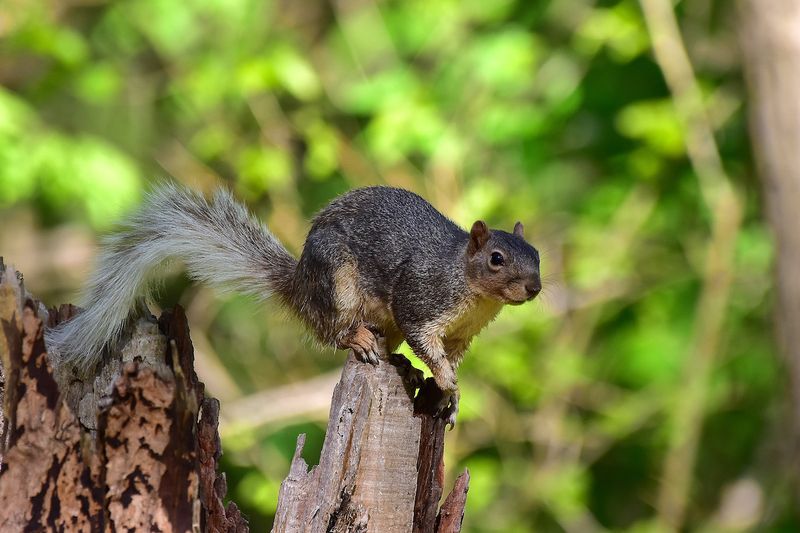
The Eastern Gray Squirrel is a lively and familiar presence in Illinois’s parks and forests. Known for their agility and bushy tails, these squirrels are expert foragers.
Their diet includes nuts, seeds, and fruits. They are known for burying acorns, inadvertently aiding in forest regeneration as forgotten seeds germinate into new trees.
Watching gray squirrels scamper through trees is a common yet delightful sight. Their playful antics and vocalizations add to the vibrant atmosphere of natural areas. Squirrels offer a connection to nature’s rhythms, as they are active throughout the year, adjusting behaviors with the seasons.
Coyote
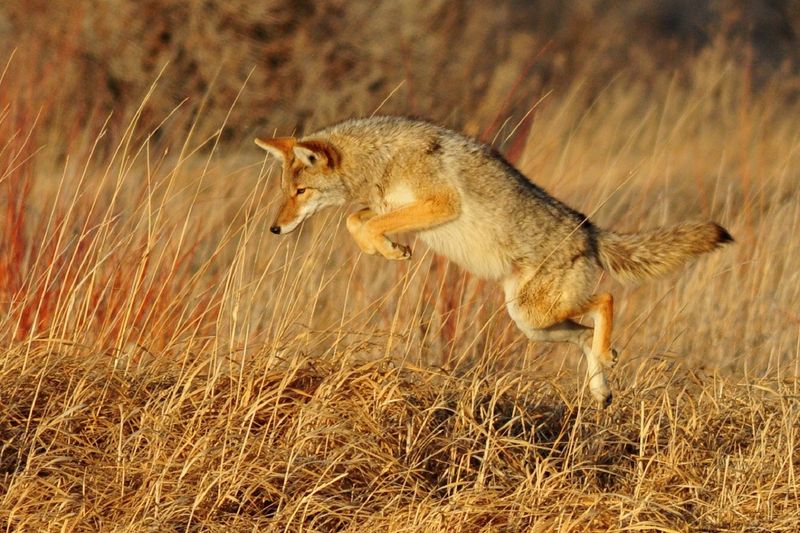
Coyotes are adaptable canines that roam the wilds of Illinois. Known for their keen senses and vocalizations, they have successfully expanded into diverse habitats.
Coyotes play a crucial role in ecosystems by controlling populations of rodents and other small animals. Their howls often fill the night air, creating a symphony of wilderness sounds.
Encountering a coyote can be an awe-inspiring experience, reflecting the adaptability and tenacity of wildlife. These animals have learned to thrive in both rural and urban environments, showcasing their resilience. Coyotes embody the spirit of survival and coexistence.
Painted Turtle
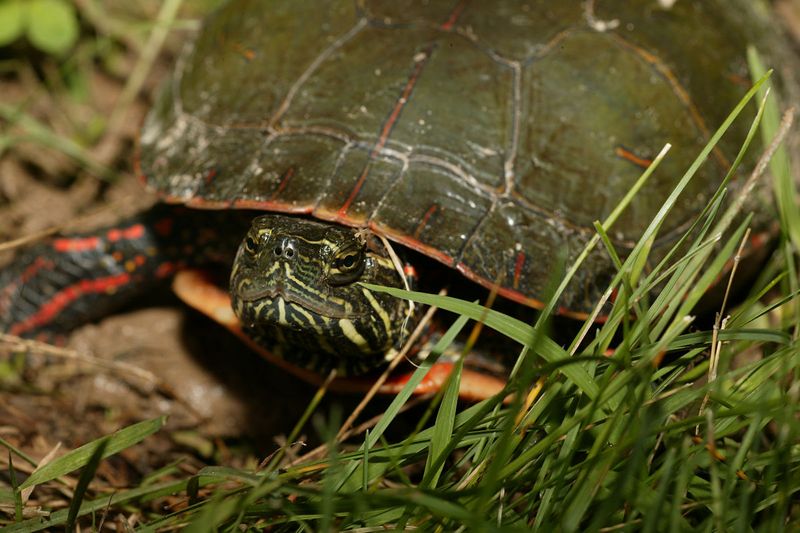
The Painted Turtle, with its vibrant markings, brings a splash of color to Illinois’s ponds and lakes. Known for their distinctive red and yellow stripes, these turtles are often seen basking in the sun.
Painted turtles are adaptable and can live in various aquatic habitats, from ponds to marshes. Their diet includes aquatic vegetation, insects, and small fish.
Observing a painted turtle provides insight into the biodiversity of aquatic environments. These turtles are a delight to watch as they gracefully swim or bask on logs. Their presence reflects healthy water bodies, supporting diverse life forms.
Red-Tailed Hawk
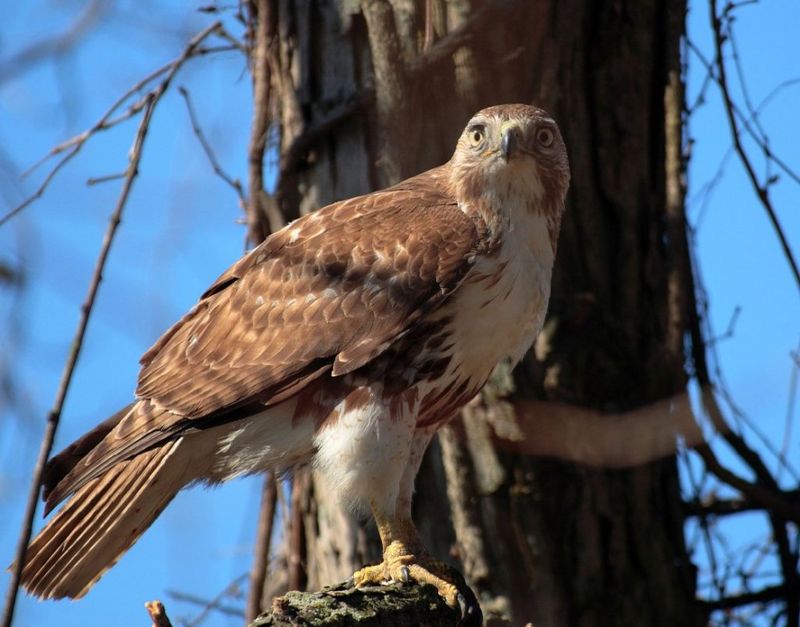
The Red-Tailed Hawk is a magnificent bird of prey commonly seen in Illinois. Known for its impressive wingspan and distinctive reddish tail, it is a skilled hunter.
Hawks are often seen perched high in trees or soaring overhead, scanning for prey with keen eyesight. They hunt small mammals and birds, contributing to the control of rodent populations.
Spotting a red-tailed hawk in flight is a thrilling experience, showcasing the grace and power of avian predators. Their calls, a series of high-pitched screams, add to the wild ambiance of natural areas. Hawks are symbols of strength and freedom.
Great Horned Owl
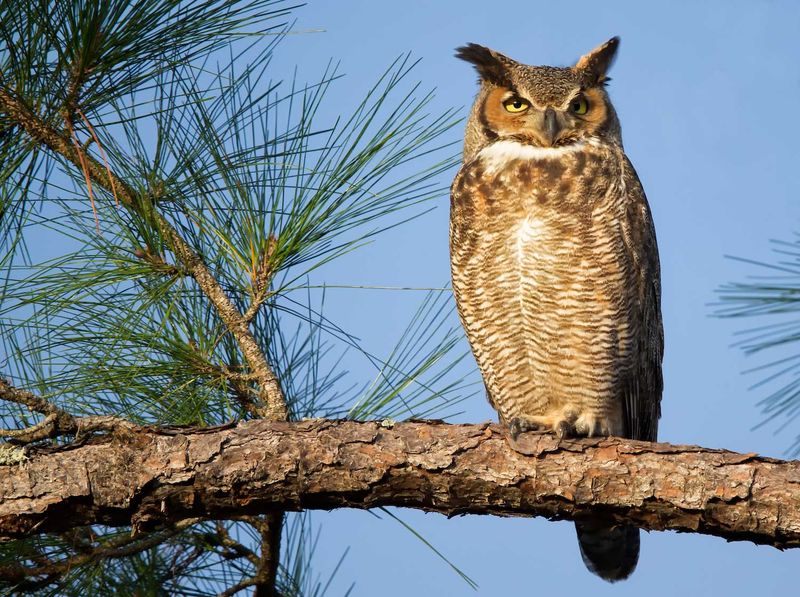
The Great Horned Owl, with its imposing presence and tufted ears, is a formidable predator in Illinois’s forests. Known for its deep hoots, it is an expert hunter, often preying on mammals and birds.
These owls are adaptable, thriving in various habitats, from dense forests to suburban areas. Their silent flight and powerful talons make them effective nocturnal hunters.
Encountering a great horned owl is a memorable experience, highlighting the majesty of nature’s predators. Their presence is essential for controlling prey populations, maintaining ecological balance. Owls inspire awe with their mysterious and regal demeanor.
Muskrat
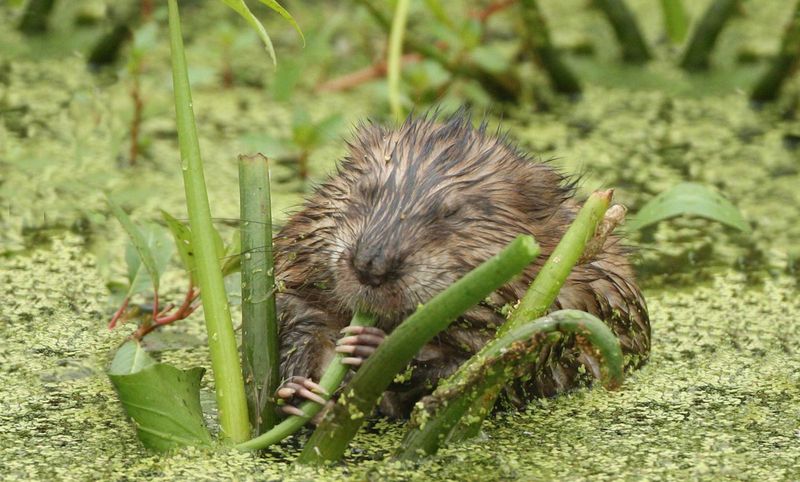
Muskrats are industrious rodents that inhabit Illinois’s wetlands. Known for their burrowing activities, they build lodges and burrows in aquatic environments, creating habitats for other species.
These animals are excellent swimmers, using their partially webbed hind feet to navigate water. Muskrats contribute to wetland ecosystems by maintaining water channels and promoting vegetation growth.
Watching a muskrat at work reveals the intricate connections within ecosystems. Their presence indicates healthy wetlands, essential for biodiversity. Muskrats embody the resilience and resourcefulness of nature, adapting to changing environments and supporting ecological communities.
American Goldfinch
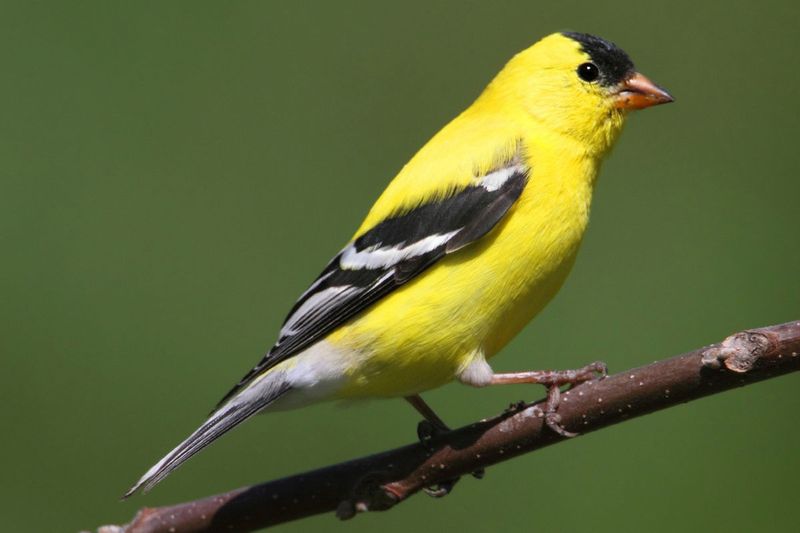
The American Goldfinch, with its sunny yellow plumage, brightens Illinois’s gardens and open spaces. Known for their cheerful songs, these birds are a delight to birdwatchers.
Goldfinches are seed eaters, often seen flitting among wildflowers and garden plants. Their vibrant colors and lively behavior make them favorites among nature enthusiasts.
Observing goldfinches offers a glimpse into the dynamic world of avian life. These birds are social and often gather in flocks, adding to the lively atmosphere of natural areas. Goldfinches symbolize vitality and the joy of life, connecting people to the beauty of nature.
American Bullfrog
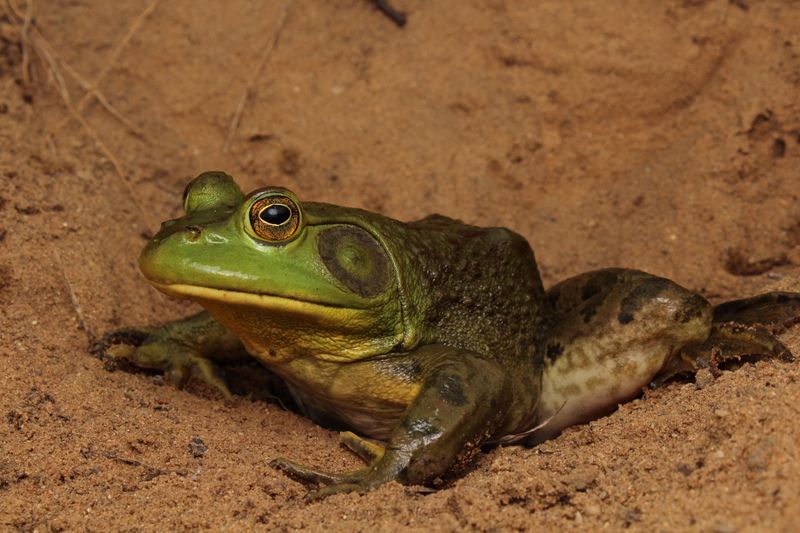
The American Bullfrog is the largest frog in Illinois, known for its distinctive croaks that echo through ponds and marshes. These frogs are impressive jumpers, often seen near water bodies.
Bullfrogs are opportunistic feeders, consuming insects, small mammals, and even birds. Their presence indicates a healthy aquatic environment, as they require clean water to thrive.
Watching a bullfrog in action reveals the splendor of amphibian life. Their calls form a chorus that defines the soundscape of wetlands. Bullfrogs are vital for controlling insect populations, contributing to the ecological balance of their habitats.
Banded Water Snake
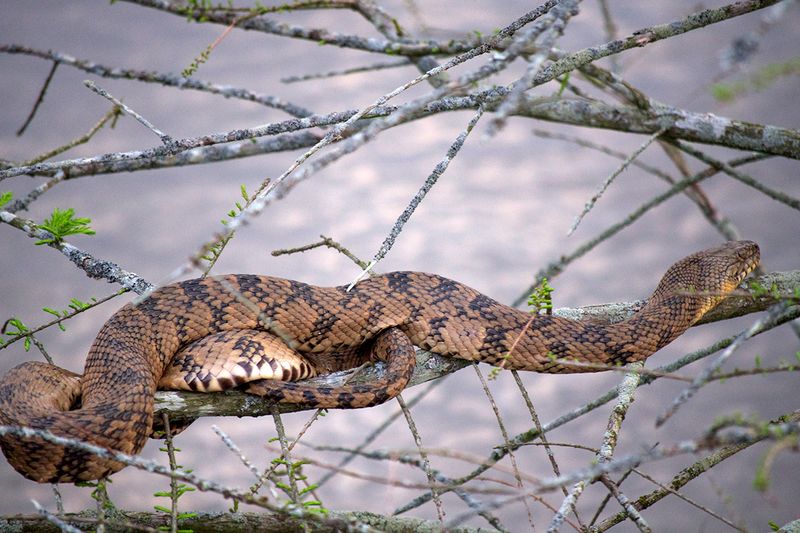
The Banded Water Snake is one of Illinois’s intriguing aquatic residents. Found primarily in wetlands, this non-venomous snake is often mistaken for a more dangerous water moccasin. It showcases an array of colors, with bands that vary from reddish-brown to black.
These snakes are excellent swimmers, often seen gliding gracefully through the water or basking on logs and rocks. Despite their intimidating appearance, they are harmless to humans. Observing a Banded Water Snake in its natural habitat can be a thrilling experience, providing a glimpse into the less-traveled parts of Illinois’s wilderness.

